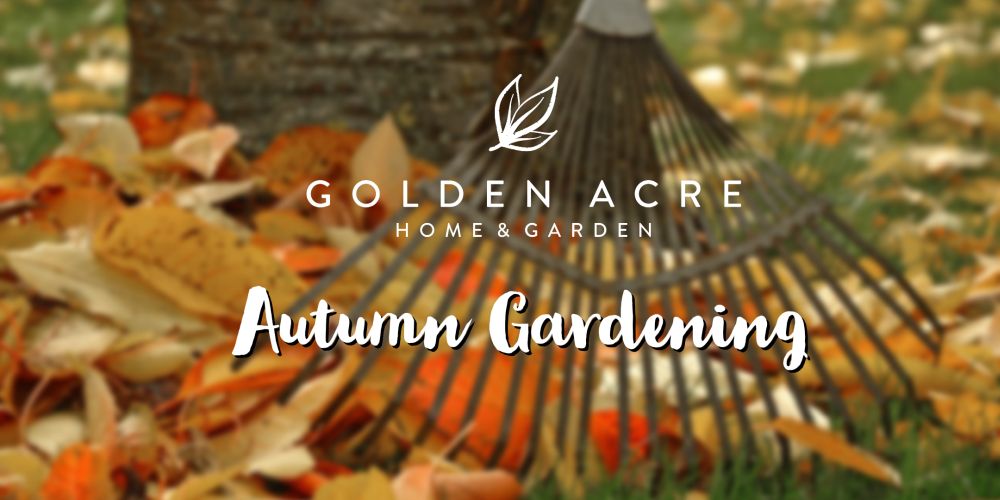Autumn doesn’t mean garden time is over. There’s still lots of time to enjoy the beauty of the outdoors! You’ve got options! Some plants thrive in autumn conditions like Chrysanthemums, grasses, and ornamental kale. Keep those annuals blooming by continuing your fertilizer and deadheading routine. You can also keep colour alive by including colorful perennials and shrubs into your garden like Coral Bells and Dogwood. Enjoy the upcoming season, and you garden, to the fullest!
Whether we’re ready or not, the garden is going through some changes as it prepares for its winter slumber. There are a few things you may want to start thinking about! In our new September Sunday Seminar Series, learn about the various aspects of autumn gardening! Well… webinars more accurately. Get comfy, and join Colin for a new topic every Sunday. The best part… it’s FREE! Register weekly on Eventbrite, or keep an eye on our social media feeds for more information.
If you weren’t able to attend this mornings webinar, you can still access Collin’s PowerPoint here
Some of the highlights….
- Maintenance
- Weeding
- Prevent weeds from seeding! Remove them all!
- You might want to combat weeds by planting perennials or grass in weed thick areas.
- Watering
- Perennials, trees, shrubs, lawns, and bulbs benefit from watering until the ground is fully frozen! It helps roots develop and overwinter.
- Fertilizing
- Dial back the fertilizing regime for trees, shrubs, and perennials.
- Keep it going for annuals! Milk all the time you’ve got with them!
- Lawns require a “Fall” fertilizer like this one from locally loved Manderley
- Consider using a slow-release fertilizer like Bone Meal when planting bulbs
- Pests / Disease
- Use pesticides/fungicides as needed and recommended.
- Keep promoting and looking for beneficial bugs!
- Weeding
- Cleaning
- Raking
- Remove leaves from the lawn, veggies beds, trees, etc.
- Consider placing leaves in a central location for the beneficial bugs over winter. If you’ve been struggling with fungus and bad bugs this year, remove everything instead.
- Pruning
- Best done during a plant’s dormancy period.
- Focus on the “4 D’s”: Dead, Diseased, Damaged, and Dangerous.
- Removing Annuals
- Make sure the plant is annual!
- Make spring easier! Once the annual is finished, remove the roots, leaves, everything.
- Cutting Back
- Not every perennial needs this… Don’t cut back Ajuga, Artemisia, Heuchera, and Catmint. If you’re just not sure, leave it till spring.
- Cutting back a perennial cleans things up and helps the plant shut down. It can also assist new shoots in the spring!
- Raking
- Planting
- Planting New
- This is when you plant bulbs like tulips, allium, garlic, and daffodils so they come up in the spring!
- This is a GREAT time to plant trees, shrubs, and perennials! By choosing to plant in the fall, you’ll receive a full season of enjoyment next year, especially for spring flowering perennials like the Bleeding Heart. Plus, they’re at least 25% off right now!
- You could also spruce up the lawn by planting sod or grass seed.
- We carry some beautiful autumn accent plants you may consider planting outside or keeping inside. Chrysanthemum, fountain grass, ornamental kale, etc. They surprisingly do well in crisp Calgary weather, but will not last through the winter.
- Transplanting/Dividing
- Great time to transplant and divide most perennials! In their dormant state and in cooler weather, the plant is less likely to go into shock and become damaged.
- DO NOT divide/transplant autumn bloomers like sedum, asters, or goldenrod. Save those for spring when they’re more dormant.
- Planting New

